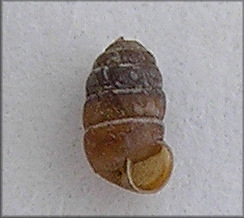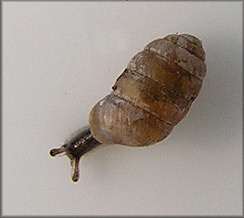|
Five years later new discoveries continue in the Vermont “Reunion Roundup” |
||||||||||||||||||||||||||||||||||||||||||||||||||||
|
By Harry G. Lee |
||||||||||||||||||||||||||||||||||||||||||||||||||||
|
As has become customary, the writer was once again a participant in a northbound pilgrimage of the Hadden clan, including in-laws such as he and three generations of sibs, cousins, nieces, nephews, grandniece, aunts, uncles, grandaunts, and granduncles, to Manchester, in southwestern Vermont. Scheduling incompatibilities forced postponement of this annual reunion, usually convened on a mid-late Sept. weekend (see Lee, 2004a, 2004b, and 2008) to a time precariously on the latter side of Indian Summer. Despite the potential for cold weather, it was reasonably balmy with clear skies for the events. However, temperatures in the mid-twenties greeted the last few participants as they straggled homeward on Monday morning. It was as if the party had received a weekend pass from Jack Frost, who thereafter promptly returned to his appointed rounds.
Given an extra day to nose around the vicinity for land snails, I set out that Friday, October 26 to sample a somewhat different habitat, a fairly extensive marsh/swamp running southeast/northwest between the West Branch, a Batten Kill tributary, and Vermont Rte. 30 in the township of Dorset. Most of my collecting had been in the vicinity of marble exposures in woodlands, in pastureland, and in another low grassy area along West Branch, downstream of this feature, and near its confluence with the Batten Kill. A marshland might provide a new species to add to the 50 I had recorded over the years (Lee, 2004a, 2004b, and 2008) from Bennington Co. I knew the lamentable by inescapable effect of diminishing returns had already been felt in these annual snail hunts, and that new turf needed to be exploited to combat it intelligently. I saw very little evidence of snails in the marsh and swamp (Station 1), so I stuffed my Ziploc with leaf litter, put into my backpack, and walked the half mile back to the campus of the swimming hole quarry (Lee, 2004b), where I’d been dropped off earlier that morning. Having seen no evidence of snails on a surveillance of the trails around the quarry, I turned my attention to a dry culvert bordered by concrete rubble near the parking area used by visitors to the recreational area. To my surprise, I saw several small, but not minute, pupiform snails on the concrete. They were clearly living snails, and I reasoned they must be Pupilla muscorum (Linnaeus, 1758), the Widespread Column, so called because of its circumboreal distribution. Only then did I recall that Hubricht (1985: 7) had associated this species with concrete culverts. Despite all the strategizing I had found a “new” species quite by “accident” - well, not entirely, but certainly not by sticking to protocol! Somewhat unexpectedly, it turned out that the litter sample I had taken at the marsh/swamp contained another “novelty,” Vertigo pygmaea (Draparnaud, 1801), the Crested Vertigo, so maybe the strategy paid off to some extent. Yet the fact is, as revealed in the summary below, both these species proved to be common and widespread in the litter samples taken on Friday and Sunday. Furthermore some these samples were remarkably rich in numbers of specimens - to an unprecedented degree. As Bill Frank says: “You don’t know if you don’t go,” and others have said: “Shells are where you find ‘em.” There will always be a certain randomness and unpredictability in this pursuit. The basic analysis: Station 1. USA: VERMONT: Bennington Co., Dorset. Swampy alder woods SE side Lane Rd., 0.3 mi SW US VT 30 (ca 1 m. SE Dorset) H. Lee! 10/26/07 2 liter soil sample:
Station 2. USA: VERMONT: Bennington Co., Dorset. Low grassy area between parking lot and VT 30 at Quarry Pond, (ca. 1.4 mi SE Dorset) H. Lee! 10/26/07 2 liter soil sample:
Station 3. USA: VERMONT: Bennington Co., Dorset. On ledges of large boulder directly across from Quarry Pond parking lot VT 30 at Quarry Pond, ca. 1.4 mi SE Dorset) H. Lee! 10/26/07 2 liter soil sample:
Station 4. USA: VERMONT: Bennington Co., Manchester, low grassy area along driveway 0.2 mi N jct. North Rd. and US7A (ca. 1 mi NNE Manchester Center) H. Lee! 10/27/07 2 liter soil sample:
Station 5. USA: VERMONT: Bennington Co., Manchester, marsh 0.2 mi W jct. Overlook Rd. and North Road (ca. 1 mi NbyE Manchester Center) H. Lee! 10/28/07 1 liter soil sample:
Cumulative take (10/26-28/07):
Five stations; 33 lots; 796 individual snails of 14 species, two of which (63, 69 specimens!) are new to the cumulative VT list (*), which now stands at 52 species [Vallonia excentrica Sterki, 1893 Iroquois Vallonia (see Marble Quarry/Natatorium Also Produces Conchological Gold and Lee, 2004b), despite having been synonymized with Vallonia pulchella (Müller, 1774) Lovely Vallonia, by some authorities, is here still considered a valid species on the authority of Jochen Gerber (1996, 2007), and thus both continue to be listed.] The count may now be summarized: 52 species; 25 new county records (including the "new" Pupilla muscorum and Vertigo pygmaea), of which 11 (among them V. pygmaea) are new state records vs. Hubricht (1985). N. B. Two non-native slugs taken at Station 4 by visual surveillance: Arion hortensis Férussac, 1819, Garden Arion, and Arion fasciatus (Nilsson, 1823), Orange-banded Arion.
Gerber, J., 1996. Revision der Gattung Vallonia Risso, 1826.
Schr. Malakozool. 8:1-227. Hubricht, L., 1985, The distributions of the native land mollusks of the Eastern United States. Fieldiana 24(1359): pp. 1-191 + viii. June 28. Lee, H. G., 2004a. Advancing Vermont malacology - or - finding lime recycled after half a billion years of mineral inertia. Shell-O-Gram 45(1): 2-5. Jan. - Feb. (Advancing Vermont Malacology). Lee, H. G., 2004b. Marble quarry/natatorium also produces conchological gold. Shell-O-Gram 45(5): 6-8. Sept-Dec. (Marble Quarry/Natatorium). Lee, H. G., 2008. Snail Survey In Vermont Becomes An Annual Event. Submitted to the New York Shell Club Notes. (Snail Survey In Vermont). |
||||||||||||||||||||||||||||||||||||||||||||||||||||


